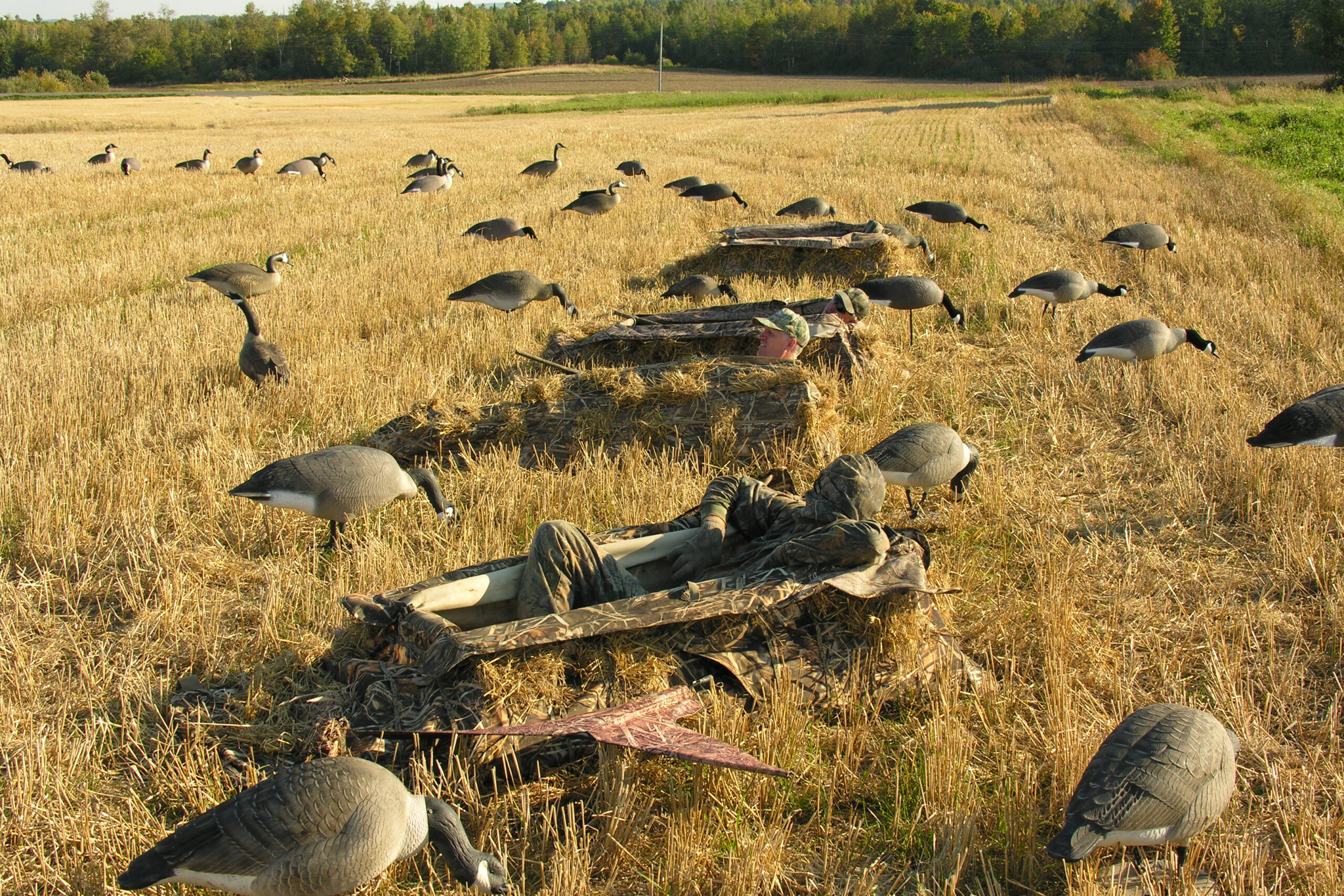
While black bear season seems to be the preeminent September attraction for hunters, there’s another option getting more popular every year. More Crown of Maine sportsmen and a steadily increasing number of southern Maine and out-of-state waterfowlers travel to Aroostook to take advantage of early season honker hunting.
Gunning for keen-eyed, wary Canada geese provides a true wingshooting challenge, and nearly four weeks for early season goose hunting adds variety to bear hunting and late-season fishing.
Fifty years ago it was rare for a hunter to spot a Canada goose during October or November. Any honkers seen locally had strayed from normal migration and were soon off after a stop to feed and rest. During the 1970s, state wildlife biologists trapped, transported and transplanted about 2,500 nuisance geese from Connecticut, New Jersey and Massachusetts into various Maine wetlands. A few years later another batch of 2,500 were trucked in and scattered.
By 1996 the population had expanded so well that a short September season was established. This year marks the 27th anniversary of Maine’s native goose hunting season, which runs from Sept. 1-25, and the daily limit has been increased to eight birds a day for the first time ever in the north zone. Every Aroostook town and village with a river, stream or good-size pond now seems to have its own native flock of geese on every waterway.
Canada geese are a wary, wily and sharp-eyed, and rather than one set of eyes like deer, moose or bear, honkers have an entire flock checking out every detail. Full camouflage clothing, especially a face mask and gloves, will improve the shooter’s odds.

A plus for area shooters is that local birds haven’t been hunted like migratory late-season geese. Since native geese are born and raised in the area, there are a lot of this year’s hatchlings, full size but a bit naïve. But boy, do they get smart and gun shy in a hurry.
September is an exceptional time to introduce novice goose hunters and young waterfowlers to the sport, because over the summer the local birds have developed habits that can be their downfall. Flocks use the same roost pond each night and the same resting waters to preen, drink and relax in the sun every afternoon. They use regular flight paths to and from these waterways, which may offer some excellent pass shooting opportunities.
Hunting roost ponds more than once or twice a season is a bad idea because the birds will move out completely if disturbed too often. For roost pond hunts, it’s best to let all the birds fly out to feed and then set out a dozen floating decoys where the geese have been spotted during scouting trips. Late morning and dusk are the best shooting times, since this is when the honkers will return to water after feeding for a few hours.
Resting waters are usually local rivers or large streams with an abundance of rocks and small islands and plenty of shoreline cover. Hunters can sneak and jump-shoot Canadas from the banks. One of the best methods of finding resting runs is to float the waterway in a canoe or small boat. On long open stretches a set of binoculars aids the search efforts.

Once a flock of geese is spotted, the boat can be beached far upstream, and hunters can sneak through the trees and bushes to get close enough for a shot. Secluded resting spots are often used fall after fall by area geese and can produce dependable jump shooting. If a road is nearby, you can visit the spot without a canoe once the spot is pinpointed.
Setting out two or three dozen decoys in a cut grain field where honkers have been spotted feeding is the most common style of goose gunning. Dawn and late afternoon are the most common feeding times, so it’s necessary to arrive and be all set up before flight time. Shooters can often lie among the decoys under a rectangle of camo cloth and be disguised enough to fool circling birds.
Calling will help some, and just a simple hale call will do for native honkers this month. Even more effective to draw the attention of passing flocks is waving a special shaped flag that imitates goose wings and gives the impression of birds landing among the decoys. Anything that attracts passing geese to swing close and check out the spread of dekes will improve the odds that native birds will land.
Pass shooting is the final option for bagging geese this month. Since honkers travel regular routes to roost ponds, resting waters and feeding fields, hunters can hide in heavy cover along the flight paths to intercept the birds and hope a flock or two flies low. No special gear is necessary to pass shot. Dress in head-to-toe camo and hide in a fence row, drainage ditch, hedge line or wood lot edge, and wait for geese to land in water or field.
Native geese aren’t stupid, just a bit less cautious and prone to habits that can help the hunter, until the birds get smart. Take full advantage of the rest of the September season and enjoy matching wits with the hometown honkers in your area.







